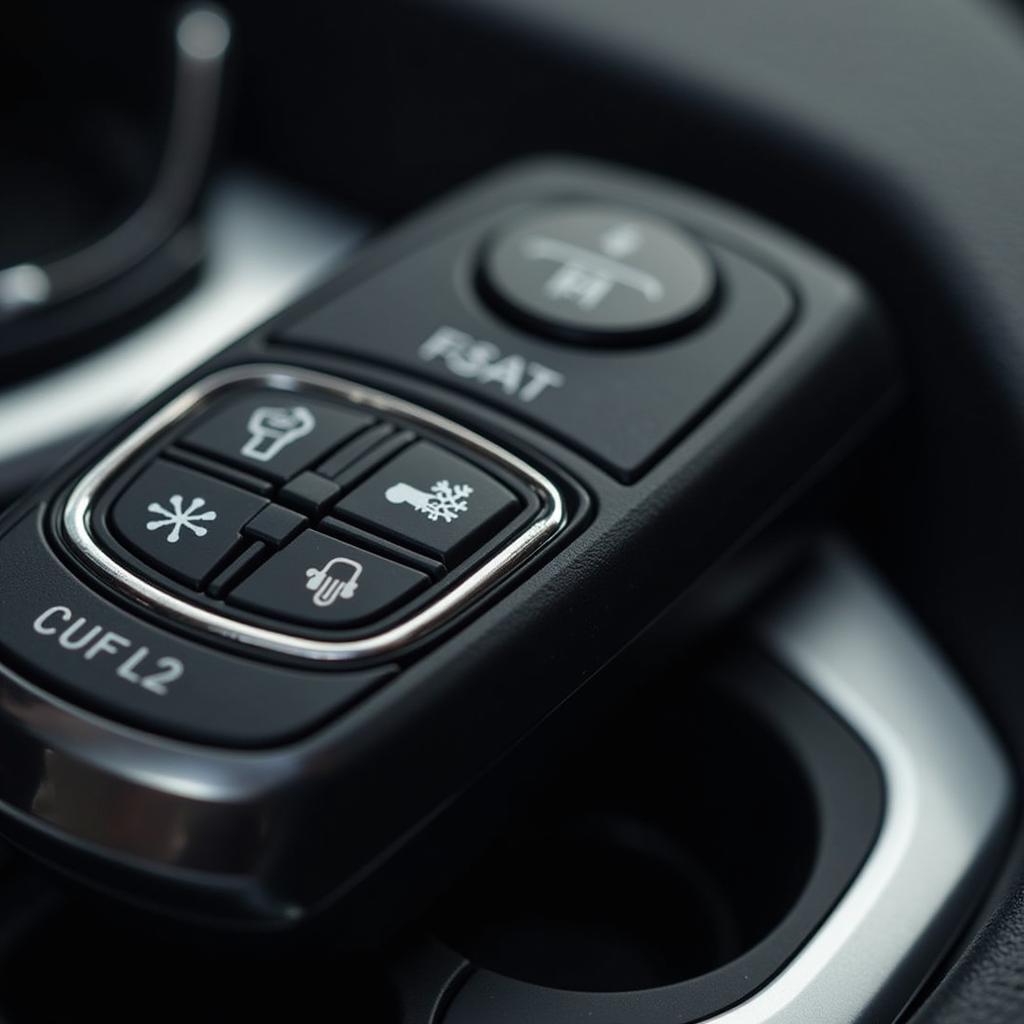If you’ve spotted a turbo button on your car key fob and wondered, “What Does Turbo Setting Do On My Key Fob?” you’re not alone. This seemingly mysterious button can have a variety of functions, depending on your car’s make and model. This article dives deep into the world of key fob turbo settings, exploring their potential uses and clarifying the common misconceptions surrounding them.
Decoding the Turbo Key Fob Button
The “turbo” label on a key fob often leads to assumptions of performance enhancement. However, the reality is often far less exciting than boosting horsepower. While some high-end vehicles might use the turbo button for performance-related functions, most commonly, it relates to the car’s climate control system.
Turbo Setting for Climate Control: The Most Common Use
In many vehicles, the turbo button activates a rapid cooling or heating function for the car’s interior. Think of it as a “boost” for your climate control. Pushing the turbo button signals the system to operate at maximum capacity, quickly bringing the cabin to a more comfortable temperature. This is especially useful in extreme weather conditions. For example, on a scorching summer day, activating the turbo setting can swiftly cool down the interior before you even get in. Conversely, during winter, it can help defrost your windshield and warm up the car faster.
 Key Fob Turbo Button for Climate Control
Key Fob Turbo Button for Climate Control
Other Potential Uses of the Turbo Setting
While climate control is the most prevalent function, the turbo button can serve other purposes depending on the car manufacturer.
Remote Start Enhancement:
In some vehicles, the turbo button, when used in conjunction with the remote start, optimizes the climate control settings for the remote start function. This ensures the car reaches a comfortable temperature more efficiently while idling.
Security Features:
Less commonly, the turbo setting can be linked to enhanced security features. For instance, it might activate a panic alarm or disable certain functions to prevent unauthorized access to the vehicle.
Vehicle-Specific Functions:
Some manufacturers might assign unique functions to the turbo button based on the vehicle’s features. Always consult your owner’s manual for the specific function assigned to the turbo button on your particular car model.
What if My Key Fob Has a Turbo Button But It Doesn’t Seem to Do Anything?
If you’ve tried using the turbo button and haven’t noticed any changes, there are a few possibilities:
- Misunderstanding of the function: As mentioned earlier, the turbo setting doesn’t magically boost your car’s performance. Check your owner’s manual to confirm its intended purpose.
- Deactivated feature: Some features, including the turbo setting, might be deactivated by default. Your car’s settings menu or a visit to your dealership might be necessary to activate it.
- Malfunctioning button or system: A faulty key fob or a problem with the car’s receiver could prevent the turbo setting from working. Try replacing the key fob battery or consulting a mechanic.
Turbo Setting: Debunking the Myths
It’s crucial to dispel the myth that the turbo button on a key fob enhances engine performance in most vehicles. This misconception likely stems from the term “turbo” itself, which is typically associated with turbochargers and increased engine power.
Does the Turbo Setting Affect My Car’s Performance?
In most cases, the answer is a resounding no. The turbo button on your key fob is unlikely to impact your car’s horsepower or speed. It’s primarily designed for climate control convenience.
Conclusion: Understanding Your Key Fob’s Turbo Setting
Understanding what the turbo setting does on your key fob can enhance your driving experience by allowing you to utilize your car’s features to their full potential. Remember to consult your owner’s manual for specific information regarding your car model. While it might not offer the thrill of a turbocharged engine, the turbo button’s climate control capabilities can significantly improve your comfort, especially in challenging weather conditions. By understanding its true function, you can dispel the myths and appreciate the practical convenience this feature provides.
FAQ
-
Does the turbo setting make my car faster? No, the turbo setting on your key fob primarily controls climate functions, not engine performance.
-
Can I use the turbo setting while driving? Yes, in most cars, you can activate the turbo setting while driving to quickly adjust the cabin temperature.
-
What if my turbo button doesn’t work? Check your owner’s manual, try replacing the key fob battery, or consult a mechanic.
-
Is the turbo setting standard on all cars? No, the availability and function of the turbo button vary by make and model.
-
Can I program the turbo button for a different function? This depends on the car model. Consult your owner’s manual or a dealership for options.
-
How does the turbo setting affect my car’s fuel efficiency? The impact on fuel efficiency is minimal, as it mainly affects the climate control system.
-
Where can I find more information about my specific car’s turbo setting? Your owner’s manual is the best source of information.
Common Situations and Questions:
- My car is too hot when I get in. Use the turbo setting to pre-cool your car before entering.
- My windshield is frosted over. The turbo setting can help defrost your windshield quickly.
- I want to warm my car up quickly on a cold morning. Activate the turbo setting with the remote start function.
Related Articles and Resources:
- Understanding Your Car’s Key Fob Functions
- Troubleshooting Common Key Fob Issues
- Advanced Climate Control Features in Modern Vehicles
Need support? Contact us via WhatsApp: +1(641)206-8880, Email: [email protected] or visit us at 123 Maple Street, New York, USA 10001. We have a 24/7 customer support team.

Leave a Reply